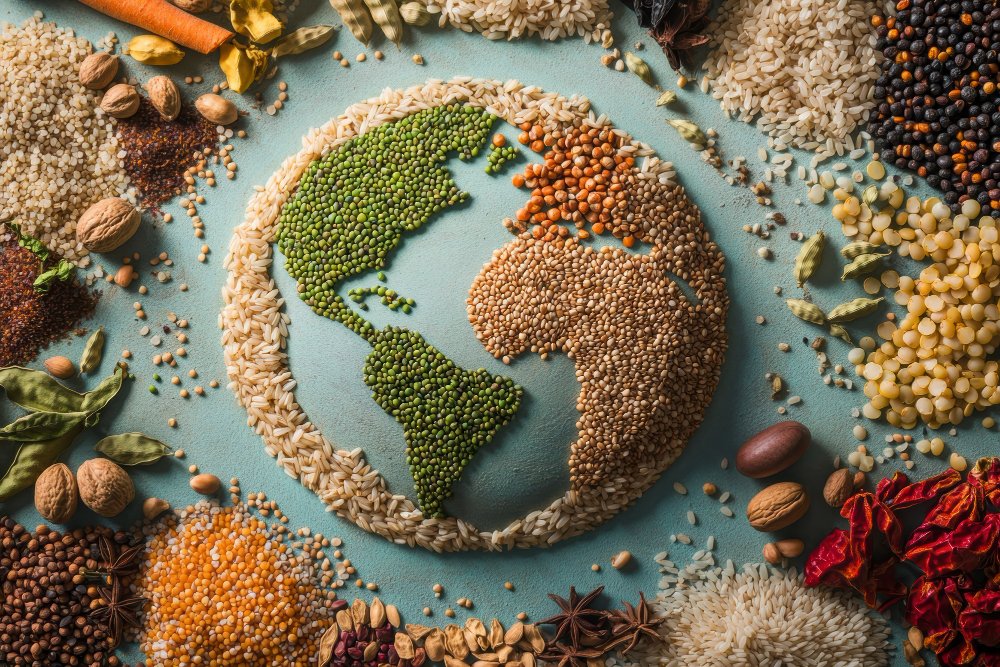How Climate Change is Reshaping the Future of Global Food Security
- 1 Climate Change’s Direct Impact on Food Production
- 1.1 Rising Temperatures and Crop Yields
- 1.2 Extreme Weather Events and Agricultural Losses
- 1.3 The Disproportionate Impact on Vulnerable Populations
- 1.4 The Global Ripple Effect: Food Prices and Migration
- 1.5 Solutions for Building Resilient Food Systems
- 2 The Real Threat of Climate Change
Climate change is one of the most pressing issues of our time, and its impact on food security is becoming increasingly clear. With rising temperatures, shifting weather patterns, and increased extreme weather events, the world’s ability to produce and distribute food is under unprecedented strain. The global food system, already fragile due to population growth, political instability, and economic disparities, now faces a new existential threat. This article explores how climate change is disrupting food production and exacerbating food insecurity, particularly in vulnerable regions, and the strategies being implemented to mitigate these risks.
Climate Change’s Direct Impact on Food Production
One of the most direct ways climate change affects food security is its impact on agricultural production. Global warming is altering growing seasons, causing unpredictable weather patterns, and increasing the frequency of extreme events such as droughts, floods, and heatwaves—all of which directly harm crop yields.
Rising Temperatures and Crop Yields
As global temperatures rise, many staple crops are becoming more challenging to grow in historically suitable regions for agriculture. Corn, wheat, rice, and soybeans, which provide more than half of the world’s calories, are particularly vulnerable. For example, studies show that every 1°C increase in global temperature can lead to significant yield declines in crops like wheat (around 6%) and rice (3–10%). Higher temperatures not only stress plants directly but also disrupt the natural processes of pollination and growth, further diminishing crop productivity.
Heat stress also exacerbates water scarcity, especially in regions dependent on rainfall. In Africa, where agriculture is predominantly rain-fed, shifting rainfall patterns lead to prolonged dry spells and desertification, making it harder for farmers to produce enough food. Water shortages affect crops and livestock, threatening the livelihoods of millions of smallholder farmers who rely on mixed farming systems for food and income.
Extreme Weather Events and Agricultural Losses
The increasing frequency of extreme weather events such as hurricanes, floods, and droughts is one of the most visible consequences of climate change. These events have a devastating effect on agriculture. For example, droughts in sub-Saharan Africa have wiped out entire harvests, leading to acute food shortages. In South Asia, floods have repeatedly destroyed rice paddies, one of the region’s most important food sources.
Moreover, these extreme weather events often occur unexpectedly, leaving farmers with little time to prepare. The unpredictability of weather patterns makes traditional farming calendars and techniques less effective, forcing farmers to take risks that may not pay off. When these crops fail, it reduces food availability and increases food prices, making it harder for the most vulnerable populations to access nutritious food.
The Disproportionate Impact on Vulnerable Populations
While the impacts of climate change on food production are felt globally, certain regions and populations are more vulnerable than others. Developing countries, particularly in Africa, Asia, and Latin America, are facing the brunt of climate-induced food insecurity. These regions are home to some of the world’s most impoverished communities, which rely heavily on subsistence farming for their food and livelihoods.
In sub-Saharan Africa, for instance, millions of people are already struggling with food insecurity due to poverty, conflict, and poor infrastructure. Climate change is compounding these challenges, pushing more people into hunger. According to the Intergovernmental Panel on Climate Change (IPCC), agricultural productivity in some African countries could decline by up to 50% by 2050 due to climate change.
Women and children are particularly vulnerable to climate-related food insecurity. Women, who comprise the majority of smallholder farmers in many developing countries, often have less access to resources such as land, credit, and technology, making it harder for them to adapt to climate change. Children, especially those under five, are at risk of malnutrition when food supplies dwindle, which can lead to long-term health consequences.
The Global Ripple Effect: Food Prices and Migration
The impact of climate change on food production has ripple effects across the global economy. Prices tend to rise when crop yields fall, and food supplies are disrupted. This is particularly harmful for low-income households, which spend much of their income on food. Food price spikes can lead to social unrest, as seen during the global food price crisis of 2007 and 2008, which sparked riots in several countries.
Furthermore, food insecurity caused by climate change is likely to increase migration. As agricultural productivity declines and livelihoods are lost, people may be forced to move in search of food, water, and work. This could exacerbate migration crises and lead to further political instability in regions grappling with conflict and poverty.
Solutions for Building Resilient Food Systems
While the challenges are immense, some strategies and innovations can help mitigate the impact of climate change on food security. Climate-smart agriculture, which aims to increase productivity while reducing emissions and enhancing resilience, is one such approach. Techniques such as agroforestry, conservation tillage, and drought-resistant crop varieties are helping farmers adapt to changing conditions.
Technology also plays a crucial role in building resilient food systems. Precision agriculture, which uses data and digital tools to optimize resource use and improve crop management, can help farmers adjust to new climate realities. Innovations in irrigation systems, such as drip irrigation, are reducing water use while maintaining yields in water-scarce regions.
Moreover, international cooperation and policy reform are crucial. Governments and international organizations must work together to create policies that support smallholder farmers, invest in climate-resilient infrastructure, and ensure equitable access to resources such as seeds, water, and technology.
The Real Threat of Climate Change
The climate crisis poses a serious threat to global food security, potentially pushing millions more people into hunger and malnutrition. As rising temperatures, extreme weather events, and shifting precipitation patterns continue to disrupt food production, the world must act swiftly to adapt and mitigate these impacts. Through innovative agricultural practices, technology, and international collaboration, we can build a more resilient and sustainable global food system capable of feeding a growing population in a warming world.

















